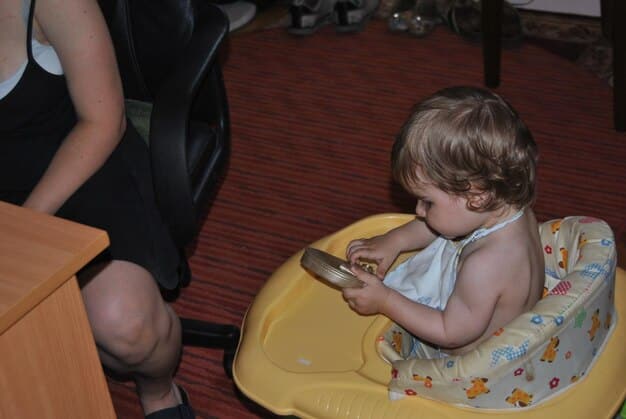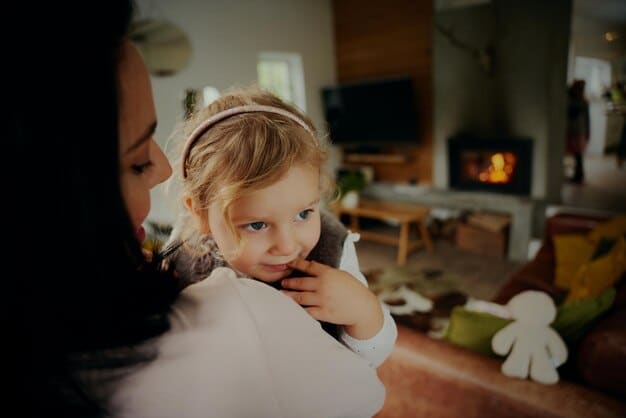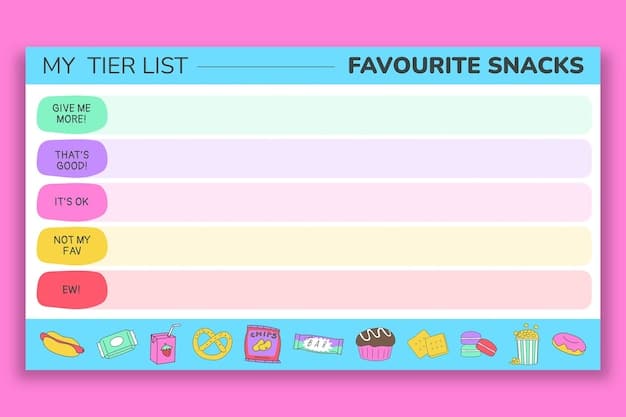Potty Training Regression: 3 Proven Steps to Success

Anúncios
Potty training regression is when a child who has been successfully using the toilet starts having accidents again; however, with patience, consistency, and these three proven steps, you can help your child get back on track within a week.
Discover how to tackle potty training regression with our 7-day plan using proven, effective strategies to help your child regain confidence and independence.
Anúncios
Understanding Potty Training Regression
Potty training is a significant milestone in a child’s development, but it isn’t always smooth sailing. Potty training regression can be frustrating for both parents and children. This section will delve into what potty training regression is, its common causes, and why it’s important to address it with patience and understanding.
What is Potty Training Regression?
Potty training regression refers to the loss of previously acquired potty training skills. This can manifest as accidents, refusal to use the toilet, or both. It’s essential to recognize that regression is common and doesn’t mean your child has failed.
Anúncios
Common Causes of Regression
- Stress or Anxiety: Major life changes like a new sibling, moving, or starting daycare can trigger regression.
- Illness: Physical discomfort from a cold, constipation, or a urinary tract infection can lead to accidents.
- Lack of Consistency: Changes in routine or inconsistent potty training practices can confuse a child.
- Attention-Seeking: Sometimes, accidents are a way for a child to get attention, especially if they feel neglected.
Other life changes or stressors such as family issues can contribute towards the regression. The key is to understand the root of their regression to help them cope and overcome it.

Understanding the causes is the first step to address the problem. It’s important to address it with patience, not with frustration, as pushing them will only cause additional stress to the child.
Step 1: Identify the Root Cause
The first step in tackling potty training regression is to identify the underlying cause. Sometimes, the reason is obvious, but it can also be complex. By figuring out what’s triggering the regression, you can tailor your approach to address the problem effectively.
Medical Reasons
Rule out any underlying medical conditions. Constipation and urinary tract infections (UTIs) are common culprits. Watch for signs like painful urination, frequent urges, or discomfort during bowel movements.
Emotional Factors
- New Sibling: The arrival of a new baby can lead to feelings of jealousy or insecurity, causing regression.
- Moving or Travel: Changes in environment can be disruptive. Try to maintain a consistent routine during these transitions.
- Daycare or School: New environments and schedules can be overwhelming. Communicate with caregivers to ensure consistency in potty training practices.
Sometimes, there’s no specific stressor you can put your finger on. The important thing is to talk to your child and show compassion towards what they are feeling.
Start by talking to your child. Ask gentle questions like where they are feeling uncomfortable, but do not force an answer. Do not display any form of frustration.
Environmental Changes
Note any recent changes in your child’s routine or environment. Has there been a change in caregivers, a new pet, or a different home setting? These changes can disrupt a child’s sense of security and lead to regression.
Identifying the root cause can take time, so be patient and observant. Once you have a better understanding of what’s triggering the regression, you can develop a targeted plan to help your child get back on track.
Step 2: Revisit Potty Training Basics
Once you’ve identified the root cause, it’s time to revisit the fundamentals of potty training. This involves reinforcing positive habits, creating a supportive environment, and ensuring consistency in your approach. This step is about making your child feel secure and confident in their ability to use the toilet successfully.
Reinforce Positive Habits
Start by reviewing the basic steps of using the potty. Remind your child to go to the toilet at regular intervals, such as every two to three hours. Use positive reinforcement, like praise or small rewards, when they successfully use the potty.
Create a chart and mark down successful potty visits. This makes them feel successful everytime they accomplish going to the potty successfully.
Create a Supportive Environment
- No Pressure: Avoid pressuring or scolding your child for accidents. Focus on encouragement and positive reinforcement.
- Comfortable Clothing: Dress your child in easy-to-remove clothing to make it easier for them to get to the toilet in time.
- Designated Potty Area: Ensure the potty is easily accessible and comfortable. Make it a pleasant space with books or toys.
A critical mindset to take on is to ensure that you are providing your child with a supportive and encouraging environment. Focus on positive reinforcement and praise, that will help boost their confidence. This will allow them to develop a positive association with using the potty.
Maintain Consistency
Consistency is key to success. Ensure that all caregivers, including parents, grandparents, and daycare providers, are following the same potty training routine. This will prevent confusion and help reinforce positive habits.

By revisiting the basics and providing a consistent, supportive environment, you can help your child regain their potty training skills and confidence. This step is about rebuilding a strong foundation and addressing any underlying issues that may be contributing to the regression.
Step 3: Implement a 7-Day Action Plan
With a clear understanding of the cause and a renewed focus on the basics, it’s time to implement a structured action plan. This 7-day plan is designed to provide a consistent, supportive framework for your child to regain their potty training skills. Remember to stay flexible and adjust the plan as needed based on your child’s progress.
Days 1-3: Intensive Reinforcement
Focus on frequent potty breaks. Take your child to the toilet every two hours, even if they don’t indicate they need to go. Use visual aids, such as a potty training chart, to track progress and provide positive reinforcement for each successful visit.
Be sure to offer rewards or incentives for using the potty successfully. Keep them engaged and happy. Talk to them about their emotions and feelings too.
Days 4-5: Gradual Independence
- Encourage Self-Initiation: Encourage your child to recognize their body’s signals and go to the toilet independently.
- Reduce Prompts: Gradually reduce the frequency of prompted potty breaks to allow your child to take more initiative.
- Positive Feedback: Continue to provide praise and small rewards for independent potty visits.
Celebrate every day that they overcome their regression successfully. Use positive affirmations. Encourage your child that they can overcome this.
Days 6-7: Maintain Consistency
Continue to follow the established routine, even on weekends or during outings. Pack a portable potty seat for travel and ensure that caregivers are aware of the plan. Stay consistent and celebrate their achievements to encourage them to continue using the potty.
If accidents happen, remain calm and avoid scolding. Clean up the accident without making a big deal out of it and gently remind your child that they can try again next time. By following this 7-day action plan, you can provide a structured and supportive environment for your child to overcome potty training regression and regain their confidence in using the toilet independently.
The key to the success of this plan lies in its consistency, positive reinforcement, and adaptability. Monitor your child’s progress and adjust the plan as needed to best suit their needs.
| Key Element | Brief Description |
|---|---|
| 🔍 Identify Root Cause | Determine if medical, emotional, or environmental factors are at play. |
| 🔄 Revisit Basics | Reinforce positive habits and maintain consistency among caregivers. |
| 🗓️ 7-Day Action Plan | Intensive reinforcement, gradual independence, and consistent routine. |
| 💖 Support & Patience | Offer encouragement without pressure during the process. |
Understanding Potty Training Regression: Common Questions
What exactly is potty training regression?
Potty training regression is when a child, previously successful at using the toilet, starts having accidents or refusing to use the toilet again. It’s a common setback that can occur due to various reasons like stress or illness.
What are the most common causes of potty training regression?
Common causes include significant life changes such as the arrival of a new sibling, moving to a new home, starting daycare, illness, or emotional stress. Identifying the specific trigger is crucial for addressing the regression effectively.
How can I identify the root cause of my child’s potty training regression?
To identify the root cause, observe and talk to your child. Look for patterns related to changes in routine, emotional stress, or physical discomfort. Consulting with your pediatrician can also help rule out medical issues like UTIs.
What should I do if my child starts having accidents after being fully potty trained?
If your child starts having accidents, stay calm and avoid scolding them. Revisit the basics of potty training, reinforce positive habits, and maintain a supportive and consistent environment. Praise successes and be patient during setbacks.
How long should I expect potty training regression to last, and when should I seek professional help?
Potty training regression can last from a few days to several weeks. If the regression persists for more than a month, significantly impacts your child’s well-being, or is accompanied by other concerning symptoms, consider seeking advice from a healthcare provider.
We’ve explored effective strategies for handling potty training regression with patience and understanding. Remember, this phase is temporary. By identifying the root cause, going back to basics, and implementing a structured plan, you can help your child get back on track, reinforcing their confidence and independence.
Read more content






